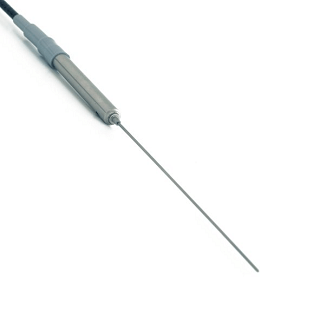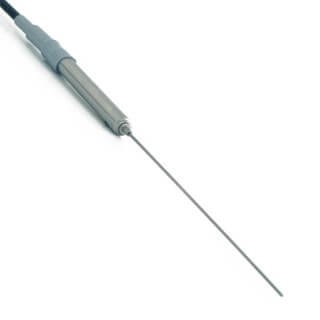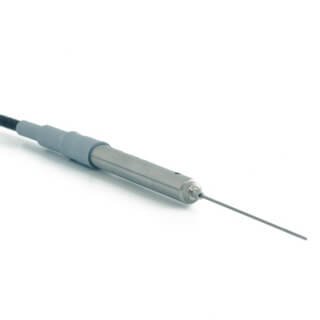Thermal conductivity measurement of snow with heated needle probes
In 2022 an article was published by Cambridge University Press for their ‘Journal of Glaciology’. This article concerned the measuring of the thermal conductivity of snow. They suspected, based on the studies (Calonne, 2011; Riche and Schneebeli, 2013), that the thermal conductivity of snow was being underestimated. The aim of the study was to explore the reasons for this consistent underestimation and to propose a correction for the use of the needle probe method in snow. They conducted an experiment using the Hukseflux TP02 needle probe model for thermal conductivity measurement, which is frequently used in snow studies.
Challenges when measuring the thermal conductivity of snow
According to recent results in the field of glaciology, it showed that the thermal conductivity of snow is consistently being underestimated. The reason for this error was unknown, but this experiment has found two causes of the problem.
The study shows that the main cause of the error is the duration of the measurement. To measure the thermal conductivity, a certain time frame should be used. At the start of your measurements, the probe suddenly exerts heat to the surrounding snow. This sudden change makes the first 35 seconds of measured results unusable. After about 40 seconds the snow conducts heat at a predictable rate. This is where the ‘logarithmic regime’ starts. From this moment on, measurements can be used to calculate the thermal conductivity.
One of the problems was that the logarithmic regime was not reached when the standard measurement procedure was applied. This has resulted in errors of more than 10%. Starting measurements after 45 seconds resolves this part of the problem.
Thermal conductivity measurement with a fixed needle probe
The second part of the underestimation was due to insertion damages. The usual procedure was to insert the probe by hand into a layer of snow. During this procedure, the person holding the probe is very probable to move the needle. Movement of the probe inside the layer of snow compresses the surrounding snow and creates gaps of air between the probe and the snow. Both issues cause inaccuracies in the measurements of the thermal conductivity.
To resolve this problem, the use of fixed needle probes is advised. This method secures the probe in the area on which the snow will fall. Before the snow has fallen, make sure the needle is fixed in its place. This ensures that the layer of snow falls directly on and around the probe, preventing gaps of air. The use of a fixed needle probe still underestimates the effective thermal conductivity, but reduces the error significantly.
The solution: Hukseflux TP02 needle probe
In conclusion, the consistent underestimation in other studies was mainly due to using the wrong timeframe and due to insertion of the probe. To eliminate the remaining error after using a fixed needle probe and using a different time frame, a correction table was made.

This table was made specifically for the Hukseflux TP02 needle probe as it is regarded as an accurate and reliable choice. Using this correction table the error of measurement is minimalized. Correction tables for other products could also be developed if all specifics of the product are known.
Original Article: “On the use of heated needle probes for measuring the thermal conductivity of snow.”









